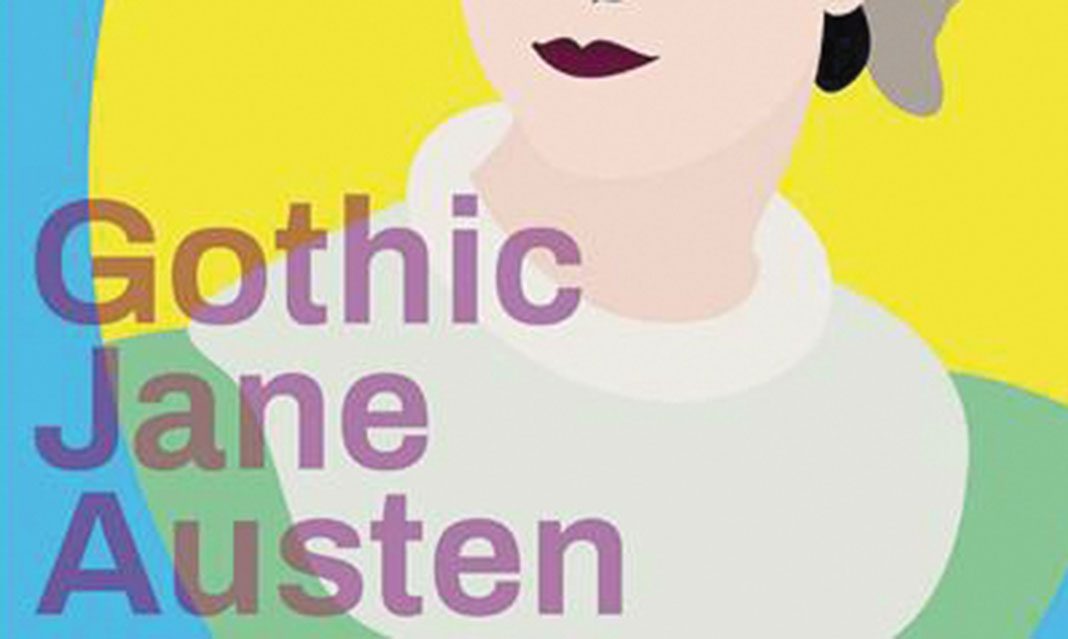Last Tuesday, the Experiential Education Office at UTM hosted their first “Lecture Me!” event of the 2018-2019 year at the Mississauga Central Library. The lecture, entitled “Gothic Jane Austen” featured professor Terry Robinson from the UTM English and Drama department who specializes in eighteenth and early nineteenth-century British literature, theatre, and culture, from the Restoration through the Romantic period. In addition to this, her research also gears towards sexuality and gender, women’s literature, art and aesthetics, and graphic satire. At this month’s lecture, Robinson discusses representations of the Gothic and “Gothic violence” in Jane Austen’s novel Northanger Abbey.
Robinson notes that during the 90’s and early 2000’s, a large surge of movies and books based on Austen’s novel were divided in terms of their reading of her text. According to Robinson, the movies and books based on Austen’s Northanger Abbey either chose to read her novel as a “courtship novel,” a novel focusing on a heroine’s self-discovery, romance, and marriage, like Pride and Prejudice, or as a parody or satire of the Gothic Novel, a genre where horrid, terrible, or dark subject matter act as the texts central feature.
As Robinson notes, some common elements found in Gothic novels include religious corruption, taboo familial relations, mysterious or threatening atmosphere, and high, overwrought and intense emotions.
Throughout Austen’s text the novel’s “heroine,” Catherine Morland, interprets the world around her as though it is a Gothic novel. Robinson explains that at several points during the novel, Catherine imagines “real-world manifestations of the Gothic.”
At one point in the novel, Catherine has the opportunity to visit Blaise Castle Estate, built in 1766. Robinson elaborates that Austen’s readers at the time, unlike Catherine, would have known that Blaise Castle was not the largest or even oldest castle in England. Catherine’s belief that the “castle will realize her gothic fantasies” exposes her own folly for confusing fictional realities, explains Robinson.
At another point in the novel, Catherine is invited to stay at Northanger Abbey by her friend’s father, General Tilney. During her stay, Catherine continues to imagine manifestations of the Gothic. She spots a chest, which contains merely a duvet cover, and a tall, black cabinet that seems to be empty but upon further inspection contains a “precious manuscript.” The “precious manuscript” turns out to be an inventory of linen. In this case, Catherine discovers “mere artifacts of domestic, everyday work,” says Robinson.
Catherine then concentrates her curiosity towards the late Mrs. Tilney, General Tilney’s wife. Through her closing reading of the text, Robinson suggests that Catherine’s investigation of Mrs. Tilney’s death leads her to suspect General Tilney as being responsible for his wife’s passing. To Catherine’s dismay, Robinson reveals, Mrs. Tilney’s death is deemed natural and provides Catherine with no fantastical plot of mystery, horror, and suspense but rather a period of “awakening,” or a realization of her folly. As Robinson words it, “horror is unrealized.”
Robinson asserts, however, that Austen is doing “something real” in Northanger Abbey. The level of violence towards female heroines of gothic novels by male characters remains present in Austen’s text, Robinson argues. Male characters, such as Henry Tilney, the son of General Tilney and Catherine’s future suitor, reveal their misogynistic standpoints on the interests of their female counterparts.
Robinson explains that there is an “undercurrent of aggression” that the men of authority assert within the text. When Henry reprimands Catherine for believing that General Tilney harmed his wife, he reveals violent undertones that highlight women’s vulnerability. Henry inadvertently reveals that his father abused his mother on a physical or emotional level. Robinson suggests that although Catherine may be a naive reader, she has not completely misread the situation. Although General Tilney did not kill his wife, he still exhibited violent behaviour towards her.
Robinson concludes that those in positions of power and authority “control and construct our own realities.” Gothic violence is no mere matter of fiction but rather an everyday matter of fact, Robinson explains during her closing remarks.



